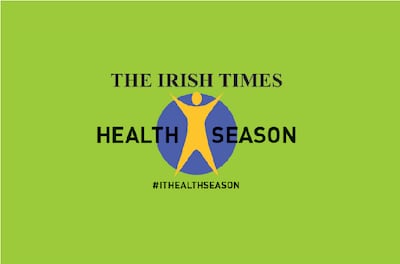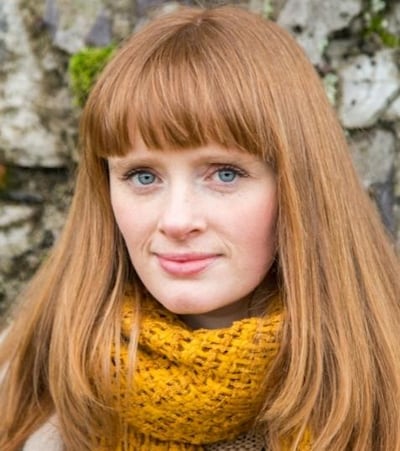
Silence is bliss for a stressed parent who has just managed to get their baby asleep, but for somebody suffering loneliness or grief, it can be an oppressive force.
During the first pandemic lockdown, the sounds of silence were striking. The truth of that apparent oxymoron lay in the birdsong and church bells amplified within a hushed, fearful world. Everyday sounds that become lost in familiarity took on new meaning.
Encouraging people to tune into this soundtrack of life became a feature last year of Music in Mind, an ongoing collaboration between Mental Health Ireland and the National Concert Hall (NCH). When the pandemic restrictions prevented musicians from visiting mental health services, the NCH piloted activity packs. These were aimed at inspiring and supporting mental health groups across Ireland to embrace music in their everyday lives as a tool for their own wellbeing.
The programme took them on a five-week journey of listening, connecting, playing and reflecting through music and the sounds around them.The pack included a gratitude journal, in which participants shared stories of music or sounds that made them feel good, calm or happy.
Songwriter and community musician Sadhbh O'Sullivan drew on the material to compose a group anthem, Feel Alive, that is being publicly released on February 15th. It evokes how those who took part were encouraged to look for the small pieces of beauty in everyday life.

“The sound of the bath running, housemates’ needles as they were knitting and their dog snoring,” O’Sullivan offers as examples of what was identified when people listened for music in the mundane.
Music is generally regarded as a “very organised sound but, actually, unorganised sound can be quite musical and lovely too”, she says.
The composition is upbeat, with a focus on positive mental health, but O’Sullivan didn’t want to gloss over the difficulties and includes a more reflective part in the middle. While the work has captured at a moment in time, “loneliness is not going to go away”, she points out, and “there are always going to be those sounds to tune into, to take you out of yourself”.
I will listen to the sound of the birds. It made you more aware – especially the sound of the bells ringing in the church
Rita Mangan, who attends the HSE’s Castlerea Training Centre in Co Roscommon, says the programme gave her a new appreciation of how “quietness is lovely”. Having struggled with severe anxiety, she lived in a HSE residential community setting for more than six years, before moving out to a place of her own in 2018. “I had a lot of trauma in my childhood. My older sister died young.”
In later years, her marriage broke down. Now in her 50s, “I am recovered nearly completely”, coping well with only a low dose of medication, a strong religious faith and was able to give up smoking more than two years ago.
At the outset, she found the worksheets in the NCH activity pack challenging. “Some of it was quite hard and I thought, ‘will I give it up?’, as all the others had somebody at home to help them. I have family nearby, but they weren’t able to come in.
“I live on my own but I am happy on my own,” she stresses. “I thought I might have to leave it. Then one evening I came home, there was nothing on. I sat at the kitchen table with a cup of tea and I concentrated, and I got it. From then on I was able to do it.”
She has no doubt it gave her a more positive attitude to silence. She used to just nip out the back occasionally, to go to the bin, but now she routinely steps out her back door in the morning, “and I will listen to the sound of the birds. It made you more aware – especially the sound of the bells ringing in the church.”
Although she would have heard them during her past three years living there, she had never really stopped to listen. “I was more aware of all these different things, where I wasn’t before this homework.” She has found them helpful ever since “if you’re down in yourself”; even subtle sounds, such as the fridge clicking.
“People say, ‘will you stop’,” but she reckons they are too engrossed in their phones or the television to notice.
I do upholstery as well in a workshop but for me the music is a form of escapism. You are quite well in the moment
John Dempsey (53) has also found tuning into sounds around him, such as birdsong, “very beneficial”, especially during walks. Of the various activities available at the Castlerea centre, music is his favourite. “It takes your mind away from the confusion and the anxiety and all those kind of emotions that you could be carrying around.
“Nearly 30 years ago I was in the US army and when I left it, I suffered post-traumatic stress disorder and also paranoid schizophrenia. My parents both passed very suddenly and life was just too difficult.”
He remains on daily medication and attends the centre three days a week. “I do upholstery as well in a workshop but for me the music is a form of escapism. You are quite well in the moment. Whereas some of the time I am a bit caught in the past and things kind of ruminate in my head.” He tries to stay in the “here and now”.
“As they say, ‘regrets of the past or fears of the future rob you of the present’.” He hopes to join a gym in Ballaghaderreen soon too because music and exercise are what works best for him. “I like the upholstery but, at the same time, your mind isn’t always on that particular job.”
He reckons he is an average enough singer and enjoys the choir at the centre. “There would be quite a lot of music in me, even though I never learned to play the guitar or anything like that.”
Before the pandemic he used to go to the Kimovee Cois Tine Heritage Centre in Co Mayo, “like in the old days, the rambling house days. I really enjoyed that – I used to contribute and collaborate.” He looks forward to the resumption of those sessions.
O’Sullivan hopes Feel Alive will get airtime on local radio in the communities of the mental health service centres that piloted the activity pack. It would be lovely too, she adds, if some of the groups might learn to sing it together, “in a way that would mean something to the people who own it”.
To people such as Rita Mangan, who was reduced to tears on hearing it played for the first time after her interview for this piece. Transported back to a moment in time.
***
Music therapist Helen Arthur: 'I heard what he had to say in the music and I matched it and validated it'
Music is a resource all of us can use to stay well or to work through trauma, says music therapist Helen Arthur.
For her, personally, the former has applied throughout her life, while professionally, she helps others to do the latter. Currently working with children and families at the LauraLynn hospice in Dublin, previously she engaged with adolescents at Limerick’s Blue Box Creative Arts Therapy Centre.
Consider the affirmation typically offered by therapists in sessions, “I hear what you’re saying”. She does that musically.
A particular 16-year-old boy coming into one-on-one sessions in Limerick sticks in her memory. “He went hell for leather on a drum kit. I had an electric guitar and I joined him. I remember, the first time I cranked up the volume to match his volume, going fast when he would go fast, he stopped for a second, just looking at me because he was expecting me to tell him to stop.
“But I heard what he had to say in the music and I matched it and validated it.” Afterwards, such an expression of emotions may be explored with words, or not.
Working in disadvantaged areas, such as Moyross, she was struck by how much loss the adolescents living there had in their lives, “through relationships breaking down, people dying”. They had also had so many professionals coming and going throughout their lives, she was conscious “I had to earn my place”. Hanging in through “public humiliation” was worth it, she laughs.
Once trust was established, the teenagers “used those therapy sessions really well. It was very poignant to see those sensitivities of those young girls and guys and meet them expressing themselves and showing their vulnerabilities.”
The hospice setting is very different but the essence of the work is the same, using music “to address presenting needs”. Usually there is active music making, but sometimes children or families choose a song for her to play.
The week we talk, she and a young Disney fan had shared You’ve Got a Friend in Me, and then they began to improvise together.
“She started singing about things that were going on in her life. She had dolls and things died, things got lost, when she started making up her version. Then I brought it back to ‘you’ve got a friend in me’”, Arthur sings in explanation on the phone call.
As the sibling of a little girl with a life-limiting condition, “I think she just named ‘it’s hard going sometimes, somebody might die’, and that was all contained in the song.”
The only training in Ireland for music therapists is a two-year postgraduate course at the University of Limerick. People typically go into it from music or healthcare backgrounds, says Arthur, who is an arts graduate, specialising in history of art and music.
“I am a competent musician but I feel I get the emotional language that it is.” When playing music as a therapist, she is not thinking about performing. “I am thinking about what do I need to do at this moment to respond to what is happening in the room.”
When dealing with children with severe developmental issues, she might be looking at how to stimulate a child to, say, move their right hand.
“For children with complex needs, cognitive impairment and little movement we might be working in the sensory world” – to stimulate or down regulate. “The body might soften and they would have less pain.
“I have had to learn to listen very acutely, with my eyes and with my ears. I keep offering until I meet something that I feel is a response and then I will explore that a bit more.”
She recalls playing a soft drum with a little boy that week and there was no response. But when she took out a shaker, his eyes moved to the sound. And bringing it to one side of his head prompted movement there too. Clearly it was something that appealed.
“The tone of their body can change. It’s like, ‘I might have your attention – we’re in this together now’.”

















